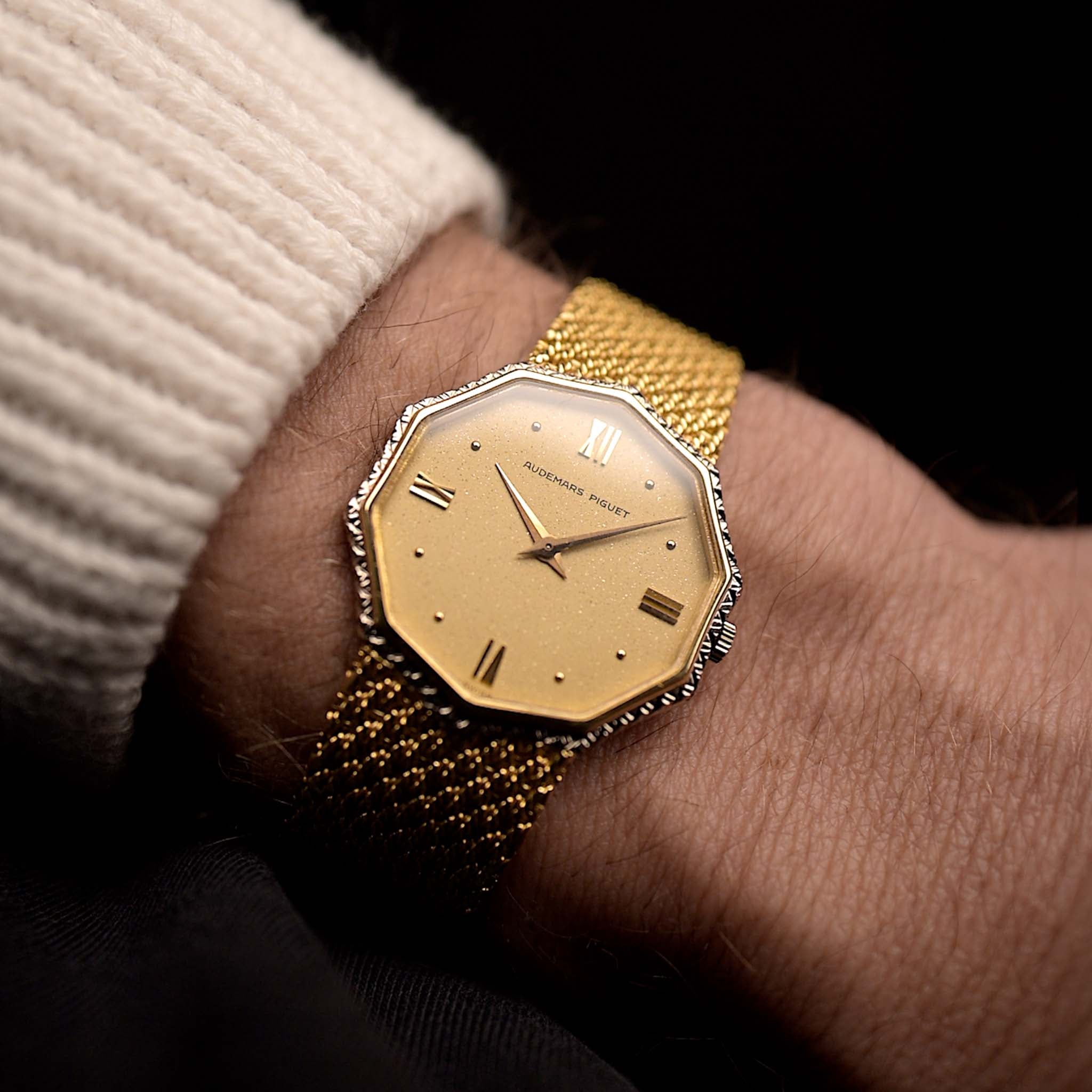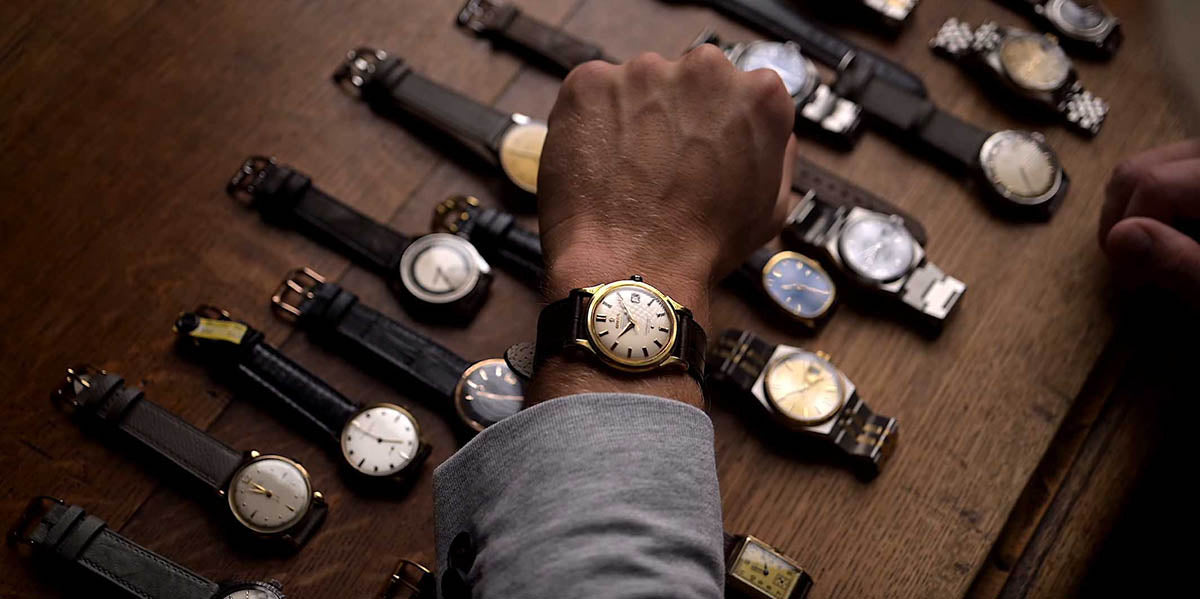In today’s watch world everybody knows Jaeger-LeCoultre, a traditional Swiss watch brand founded in 1833. However, in some of the vintage JLC models you often only see the name “LeCoultre” stamped on the dial. So what's the story behind these dials? In short it was Jaeger-LeCoultres way of staying afloat on a competitive US American market. So let's start a conversation about culture in the watch culture.
March 29, 2022
Jaeger-LeCoultre & the US Market
 Marcus Siems @siemswatches
Marcus Siems @siemswatches
Collector, Author, Data Analyst
In today’s watch world everybody knows Jaeger-LeCoultre, a traditional Swiss watch brand founded in 1833 by Jacques David and Charles Antoine LeCoultre and renamed to Jaeger-LeCoultre in 1937 after merging with the Parisian watchmaker Edmond Jaeger[1]. However, if you check out some of the vintage JLC models of the 1950s and 1960s you often come across dials solely stamped “LeCoultre”.
Interesting, so why would an established watch brand obscure its identity on a dial? Believe it or not this will actually be a fun story about import taxes. These LeCoultre-dialed watches were originally produced for the US American market approximately between the 1930s until the mid-1970s[2].
 Funnily it didn't stop at "LeCoultre". There are quite some "Jaeger" chronographs out there as well... But that's a different story. Photo @goldammer.me
Funnily it didn't stop at "LeCoultre". There are quite some "Jaeger" chronographs out there as well... But that's a different story. Photo @goldammer.me
Back then under US import regulations high tariffs were in place on watches to protect US companies. But Jaeger-LeCoultre was still invested in the US market and to cut costs on the export started to only ship out the movements (plus dial) and manufactured the cases locally within the US. Now exactly these export dials were stamped “LeCoultre” to exemplify their status as partially Swiss- partially US-made.
Now, as charming as this tax loophole is, there’s not much information out there on these somewhat quirky developments within the 20th Century vintage watch market. But there’s an amazing yet mostly overlooked story behind these dials.
 The ominous "LeCoultre" stamp on a classic Memovox, well, Wrist-Alarm as it was called on the US-market. Photo @goldammer.me
The ominous "LeCoultre" stamp on a classic Memovox, well, Wrist-Alarm as it was called on the US-market. Photo @goldammer.me
Think about it, if we analyze the LeCoultre versus the Jaeger-LeCoultre watches we can get a proxy for the differences between the US and European watch markets of the last Century. A rather small percentage of it and in a very confined sub-market but a direct comparison nevertheless. So do we find some models more frequently in the US than in Europe? Was the taste of the average customer different?
To answer these questions I assessed the key design elements of 5000 watches publicly listed on chrono24[3] and took a closer look at 370 of those vintage watches - 140 from LeCoultre & 230 JLC between 1940-1975. As such we can put our comparison into the broader perspective of the overall vintage market. Let's start a conversation about culture in the watch culture.
 Figure 1. Distribution of Jaeger-LeCoultre watches per year, plotted against the relative numbers of the entire market (solid gray) and the dress watch market (dashed gray).
Figure 1. Distribution of Jaeger-LeCoultre watches per year, plotted against the relative numbers of the entire market (solid gray) and the dress watch market (dashed gray).
Most of the vintage JLC watches available on the market right now come from the 1940s and 50s. This is a rather interesting trend as the overall market rather increased in volume up until 1970. However, the taste of the public in the 1960s strongly shifts towards sporty and utility oriented timepieces whereas Jaeger-LeCoultre has always been renowned for their dress and dress casual watches.
 Figure 2. Distribution of LeCoultre (USA) and Jaeger-LeCoultre (Europe) watch types, and the applied materials - silver for steel, golden for gold and silver/gold dashed for gold-plated watches. Including an extract for an JLC Galaxy with Mystery hands[2].
Figure 2. Distribution of LeCoultre (USA) and Jaeger-LeCoultre (Europe) watch types, and the applied materials - silver for steel, golden for gold and silver/gold dashed for gold-plated watches. Including an extract for an JLC Galaxy with Mystery hands[2].
And indeed between 1940-1975 over 80% of all the timepieces within our analysis were classy, elegant and understated dress watches. There’s little difference between the two markets but overall it appears the US customer has been focused a tad more on the dressiest of pieces. On the hand the US seem to not quite bother with chronographs.
The US market generally fancies the their watches as precious men’s jewelry. Looking at the applied materials we can see that almost half of the LeCoultre watches (47%) are solid gold, which is only a bit more than a third for the European market.
 Gold seems to have been particularly appealing for the US-side of the Jaeger-LeCoultre customers. But beware: All that glistens is not Gold. Photo @goldammer.me
Gold seems to have been particularly appealing for the US-side of the Jaeger-LeCoultre customers. But beware: All that glistens is not Gold. Photo @goldammer.me
Adding on top of that gold-plated watches are far more common in the US than on the European market[4] - 20% versus only 4%. Following the charming American sentiment: “you fake it, till you make it” - it’s about the look (This is also partially supported by the increased use of 14k gold in the US[5]).
So even if there might be more classic LeCoultre dress watches, they still seem to be a bit flashier than their European counterparts. One particular model that drives this argument home is the now rarely mentioned 1950s Galaxy. A time-only watch with so-called “mystery hands” - a visually floating handset that is applied to two rotating disks[6-7].
 Diamonds are not only a girl's best friend... The bling seems essential on the US market. A trend picked up by many Swiss brands. Photo @goldammer.me
Diamonds are not only a girl's best friend... The bling seems essential on the US market. A trend picked up by many Swiss brands. Photo @goldammer.me
But what makes this model even more special? The hands came as floating diamonds. Floating. Diamonds… I can only imagine this must have been the most extroverted a watch could be back then. And from what I see the perfect incarnation of the US American watch market of its time.
References
[1] Jaeger-LeCoultre: Our History; Jaeger-LeCoultre
https://www.jaeger-lecoultre.com/eu/en/our-maison/our-history.html
[2] Jaeger-LeCoultre and the U.S. market, part 1; Blomman, BlommanWatchReport
https://blommanwatchreport.com/2019/11/13/jaeger-lecoultre-and-the-u-s-market-part-1/
[3] Watches from Chrono24, extracted 2020 Nov. 29th; Karlsruhe, Germany;
[4] Jaeger-LeCoultre and the U.S. market, part 3; Blomman, BlommanWatchReport
https://blommanwatchreport.com/2019/11/13/jaeger-lecoultre-and-the-u-s-market-part-3/
[5] 1950s Vacheron & Constantin-LeCoultre Diamond Galaxy Mystery Dial; Hodinkee;
https://shop.hodinkee.com/products/1950s-vacheron-constantin-lecoultre-diamond-galaxy-mystery-dial
[6] Shot of the day: LeCoultre Mystery Dial; Blomman, Blomman Watch Report;
https://blommanwatchreport.com/2019/06/12/shot-of-the-day-lecoultre-mystery-dial/
[7] Jaeger-LeCoultre Mystery or Galaxy: Review on a superb watch; Amanico, WatchProzine;
All rights on text and graphics reserved to the Author.



























